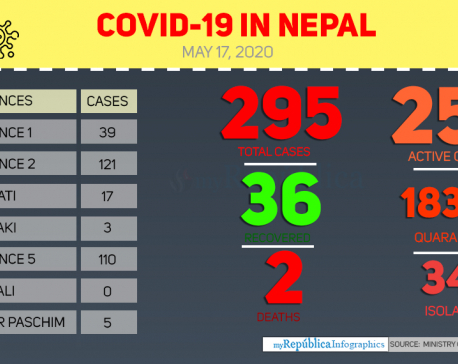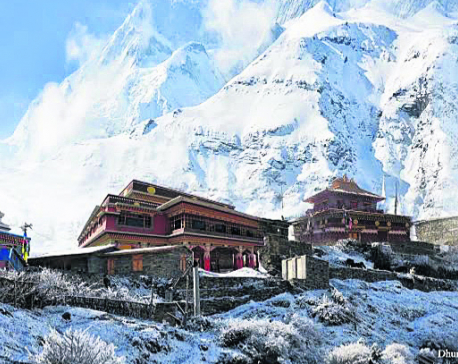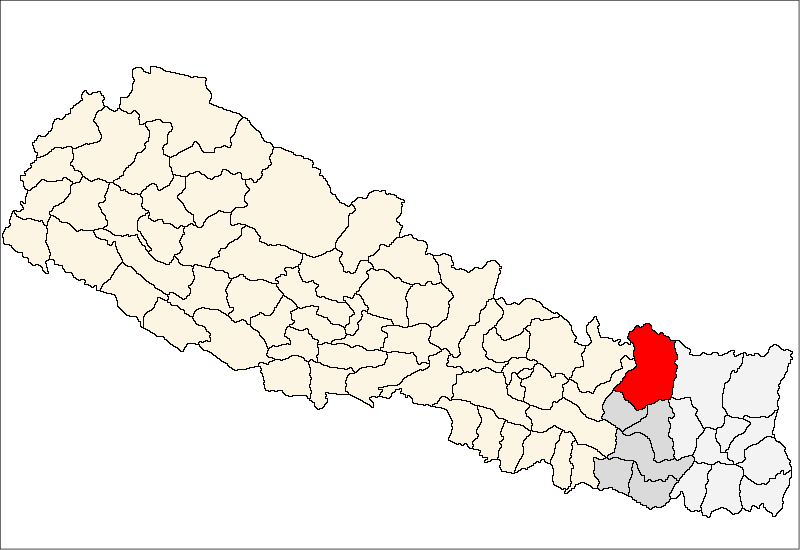
OR
Opinion
Urban Agriculture for Sustainable Urban Development in Nepal
Published On: July 22, 2023 09:00 AM NPT By: Ambika P. Adhikari & Keshav Bhattarai

More from Author
Urban agriculture (UA), or urban farming, is the practice of growing food within urban areas for family consumption or small-scale commercial purposes. It consists of growing fruits and vegetables, and sometimes raising small animals on-site in residential units and sites.
Residents of cities and towns have practiced urban agriculture ever since humans began to live in them. Recently, there has been a revival of interest in it because of the potential of urban agriculture to improve food access, and security for the residents, and sustainability of the urban areas. Urban agriculture has a lesser impact on the land and environment than conventional agricultural practices. It also supports community building and enhanced social interactions.
A Michigan State University study has found that traditionally produced food in the USA is transported to an average distance of almost 1,500 miles before it arrives on the supermarket shelves. This practice adds unnecessary extra cost to food, increases carbon emission, destroys freshness of food, and can be prone to supply disruptions caused by harsh weather, road closures, strikes, and when the public health system breaks down. While a transportation-based supply chain is necessary in a modern economy, urban agriculture can help avoid some of the above problems.
The traditional agricultural sector has become a polluting, water intense, and ecologically damaging industry. Urban agriculture could help to offset some of these problems by shifting at least part of the agricultural production to the urban farms.
Urban agriculture can take place in building balconies and rooftops, residential yards, and sometimes in vertical structures inside the buildings, and also in community gardens. It supports food security, and promotes individual productivity, facilitates community building and promotes environmental and economic sustainability. Urban farming may be conducted through hydroponics, aquaponics, vertical farming, and a more space-efficient agro-practice. Urban farming produce is typically for private consumption by the producers but can also be for commercial purposes.
Farming at home in urban areas can greatly help reduce food waste as no transportation and refrigeration of food is necessary. The food can move from plant to kitchen top, and food table for each meal. The freshness of food remains intact, and wastage is minimized.
Urban agriculture does include some risks and challenges such as: smell from compost, flies and worms from soil and plants, and conflicts in land uses. Neighbor’s concerns with urban animal raising and associated noise and smell can be an area of conflict. However, on average, urban agriculture can positively contribute towards a healthy, and resilient community, when implemented with good planning strategies.
Examples of Urban Agriculture In the US and Nepal
The metro Phoenix region in Arizona, USA is an urbanized region of almost 5 million people in 2023. Most municipalities of the metro area promote urban areas through policies and regulation. This helps in food security, reduction in transportation needs, mitigation of the heat island effect, and self-reliance of households on food. For example, the City of Phoenix 2025 Food Action Plan and the City of Tempe in Arizona in its General Plan 2040, specifically include policies to expand for urban agriculture – home gardens, community gardens, urban farms, farmers markets. Many other cities in metro Phoenix and elsewhere in Arizona have plans and programs to promote and encourage urban agriculture.
Agritopia, a mixed-use community in the burgeoning Town of Gilbert is an example of how urban agriculture could be woven into the urban fabric and made it more appealing. Agrotopia utilizes urban agriculture not only for local food production, but also to make the community more attractive for the urban residents. The juxtaposition of urban agriculture and restaurants which use the food produced there is an example of the symbiotic relationship between the urban environment and urban agriculture.
On an experimental basis, the University of Central Missouri (UCM) is growing tomatoes on a hydroponic system inside the greenhouse year-round without the need for supplemental heating and cooling systems. In a hydroponics system, nutrient-rich water is circulated through the water container and plant. No soil is used to grow plants, which are supported by various substrates. The substrates provide some holes for air circulation. Under normal temperatures, tomato seeds start germination between 5 and 14 days. The germinated plants are transplanted into the hydroponic system.
Urban Agriculture in Nepal
As the vast majority of the urban residents in Nepal are first-generation urbanites, farming is deep-rooted in their blood. Even the highly urbanized places such as the town in the Kathmandu Valley, Pokhara, Birgunj, Biratnagar, Itahari, Dharan, and Butwal have emerged from recent agricultural places or have agricultural activities in the adjoining areas. Because of the historical nexus between urban development and farming, urban agriculture comes naturally to many of the residents in these locations. In more dense urban centers such as the cities in the Kathmandu Valley and Pokhara, tens of thousands of residents have resorted to urban agriculture on rooftops, balconies, windowsills, and backyards.
Except for a few well-established cities, most of Nepal's new urban centers have just been reclassified by the government and still retain many rural characteristics. Many residents are still practicing agriculture in small tracts of land, while they have been classified as urban residents. Similarly, as urban areas grow the adjoining agricultural lands also begin to gradually join urban life. In denser and more mature urban areas, urban agriculture will mainly happen on rooftops, balconies, and yards in the building lots.
In Nepal, urban areas are developing in various stages, and urban farming is emerging in different forms. In the dense and well-developed urban centers, urban agriculture happens in smaller hardscapes on and around the buildings. In suburban areas, urban agriculture can be seen on the front, back and side yards of residential lots. In emerging urban areas, urban farming can be found on the several vacant lots and open spaces spread across the cities and towns.
Because of the targeted use and manual practice, urban farming generally uses less water per unit of production than conventional farming, and it follows the notion of the circular economy. In a circular economy, almost all the activities are monetized, wastes are fully recycled and utilized, and food becomes completely organic. For example, food waste is fed to plants to save money and enhance productivity.
Estimated Avoidance of Greenhouse Gases by Urban Agriculture in Nepal
Urban agriculture can help avoid emissions of greenhouse gasses caused when traditionally produced agricultural products are transported to the urban markets. Obviously, the absorbed carbon dioxide will be changed into biomass and fruit production.
The authors estimate that if all urban residents practice urban agriculture in Nepal, total annual Carbon di-oxide equivalent avoidance equals 262,400 tons per year. Further, the authors also estimate that urban agriculture can save a household 25 percent of their food expenditure.
Conclusion and Recommendations
Traditional agricultural process is energy intensive causing land, air, and water pollution. The supply chain from distant farmlands to urban areas is long and unpredictable causing waste and adding to pollution and the emission of greenhouse gasses. Urban farming with a distributed production that is close to the point of consumption can greatly help in supplementing the food needed by urban households. It can also help in reducing pollution, promoting healthy food, and mitigating some issues related to the food supply chain. Further, it can help reduce the emissions of greenhouse gasses, and help urban households save money on food.
We recommend that the local authorities and institutions in Nepal support urban farmers with technology, marketing, training, and appropriate policies. The municipal governments can create helpful regulations in zoning and land use to promote urban farming while protecting public health and safety. Though urban farming has been much advocated recently, the building codes should also foresee potential urban farming on terraces, on-site, balconies, and rooftops, and ensure that waterproofing and load bearing for the additional soil, water, and plants is included in the calculation required for the structure of buildings.
-----------
Note: This piece is based on the article “Promoting Urban Farming for Creating Sustainable Cities in Nepal” by Keshav Bhattarai and Ambika P. Adhikari published in Urban Science Journal, May 2023. https://www.mdpi.com/2413-8851/7/2/54
You May Like This

Health ministry confirms three new COVID-19 cases, number of total cases reaches 295
KATHMANDU, May 17: Nepal reported three new cases of COVID-19 on Sunday evening, taking the national tally to 295. ... Read More...

Dhurmus, Suntali to build ‘a Nepal within Nepal’
KATHMANDU, June 5: After successfully completing three settlement projects for earthquake victims and other communities, the actor couple Sitaram Kattel (Dhurmus)... Read More...

Nepal vs Kenya: Five crucial things Nepal looks for second match
KATHMANDU, March 12: Nepal is taking on Kenya on Monday in the second match of the ICC World Cricket League... Read More...




Just In
- NEA Provincial Office initiates contract termination process with six companies
- Nepal's ready-made garment exports soar to over 9 billion rupees
- Vote count update: UML candidate continues to maintain lead in Bajhang
- Govt to provide up to Rs 500,000 for building houses affected by natural calamities
- China announces implementation of free visa for Nepali citizens
- NEPSE gains 14.33 points, while daily turnover inclines to Rs 2.68 billion
- Tourists suffer after flight disruption due to adverse weather in Solukhumbu district
- Vote count update: NC maintains lead in Ilam-2














Leave A Comment